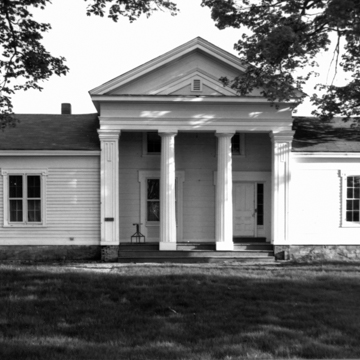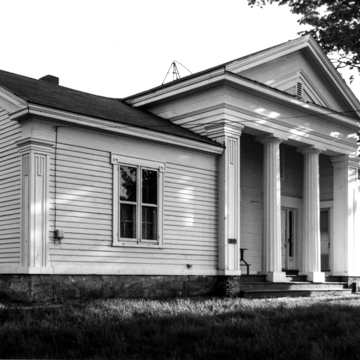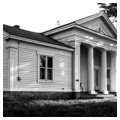Greek Revival farmhouses throughout Addison County are synonymous with sheep. This sophisticated example was built for Harris Bingham, member of a prominent Cornwall sheep-raising family at a time when the town's population was 1,100 people and there were more than 15,000 sheep. Modest in size, it was designed with high-style aspirations that make it one of the most noteworthy Greek Revival houses in the state and that suggest it is an undocumented work of important local master builder James Lamb. A type prevalent in west-central Vermont, it features single-story ells that flank a one-and-a-half-story temple/pavilion. A Doric portico in antis shelters a recessed, flush-boarded facade and carries a full entablature, and its terminal pilasters, paneled with a Greek key motif, are matched by pilasters at the ends of the clapboarded wings. Paired windows are symmetrically set in the wings, though formal pretensions seem to yield to interior convenience with the asymmetrical placement of windows and sidelit door in the central section.
You are here
Judge Bingham House
If SAH Archipedia has been useful to you, please consider supporting it.
SAH Archipedia tells the story of the United States through its buildings, landscapes, and cities. This freely available resource empowers the public with authoritative knowledge that deepens their understanding and appreciation of the built environment. But the Society of Architectural Historians, which created SAH Archipedia with University of Virginia Press, needs your support to maintain the high-caliber research, writing, photography, cartography, editing, design, and programming that make SAH Archipedia a trusted online resource available to all who value the history of place, heritage tourism, and learning.





